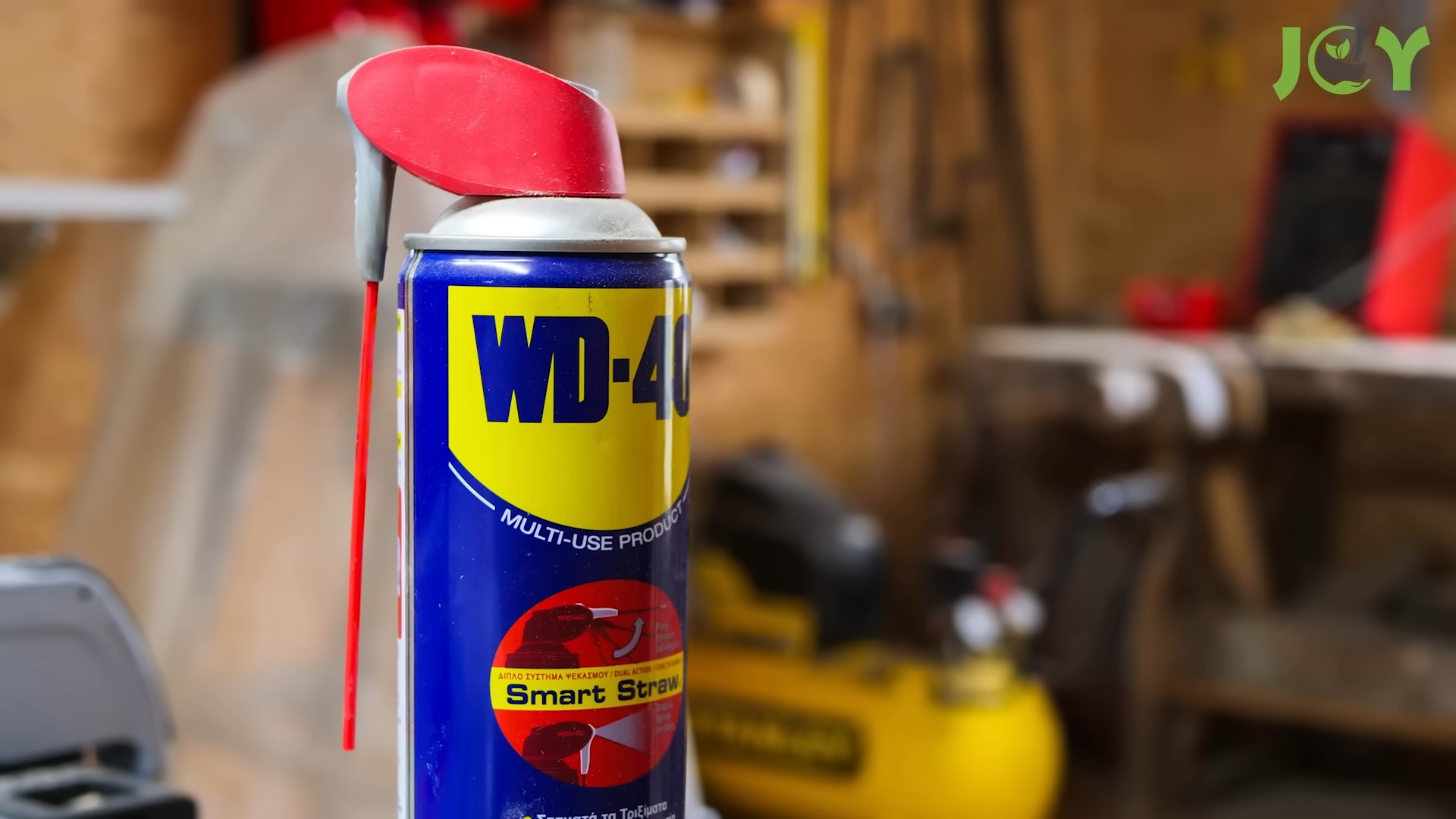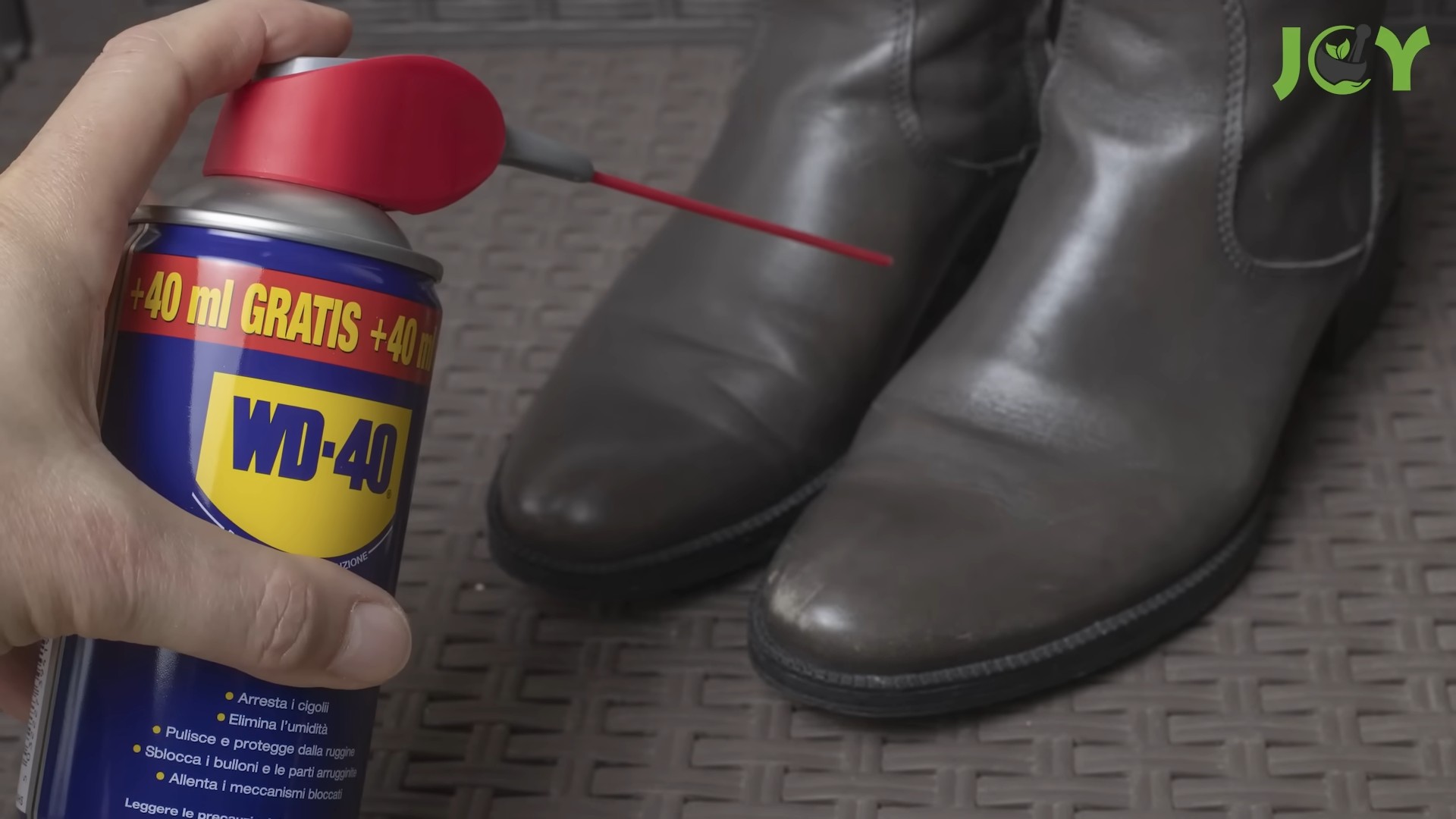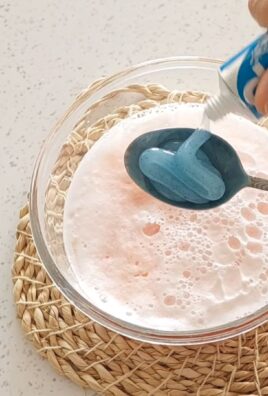WD-40 uses and tips 鈥?who knew this can of magic could be your secret weapon in the garden? I’ll be honest, I always thought WD-40 was just for squeaky hinges and rusty bolts in the garage. But boy, was I wrong! This unassuming spray has a surprising number of applications that can make your home gardening life so much easier.
For generations, WD-40 has been a staple in workshops and homes, a testament to its versatility. While its exact formula remains a closely guarded secret, its effectiveness is undeniable. But beyond its industrial uses, it turns out that WD-40 can be a gardener’s best friend.
Are you tired of struggling with sticky pruning shears? Or maybe you’re battling stubborn aphids that just won’t quit? Perhaps you’re looking for a way to protect your tools from rust and corrosion? Well, you’re in the right place! This article is packed with ingenious WD-40 uses and tips that will transform the way you approach gardening. I’m going to share some simple, yet incredibly effective, hacks that will save you time, money, and a whole lot of frustration. Get ready to unlock the full potential of this amazing product and take your gardening game to the next level!

Unlock the Magic: 25 Unexpected Uses for WD-40 Around Your Home
Hey there, fellow DIY enthusiasts! I’m always on the lookout for clever hacks that make life a little easier, and let me tell you, WD-40 is a true unsung hero in the world of household solutions. It’s so much more than just a lubricant! I’ve compiled a list of 25 surprising and practical uses for this magical spray that will have you reaching for that blue and yellow can more often than you think. Get ready to be amazed!
1. Silencing Squeaky Hinges
This is probably the most well-known use, but it’s worth mentioning because it’s so effective.
* The Problem: Annoying squeaks from door hinges, cabinet hinges, or even gate hinges.
* The Solution: WD-40!
1. Grab your can of WD-40 and the little red straw.
2. Attach the straw to the nozzle for more precise application.
3. Position the straw directly at the hinge.
4. Give it a short burst of spray.
5. Open and close the door or cabinet several times to work the lubricant into the hinge.
6. Repeat if necessary. Wipe away any excess WD-40 with a clean cloth.
2. Removing Sticky Residue
Stickers, tape, and labels can leave behind a frustrating sticky residue. WD-40 to the rescue!
* The Problem: Stubborn sticky residue from stickers, tape, or labels on various surfaces.
* The Solution: WD-40 dissolves the adhesive.
1. Spray WD-40 directly onto the sticky residue.
2. Let it sit for a minute or two to penetrate the adhesive.
3. Wipe away the residue with a clean cloth or paper towel. For tougher residue, you might need to scrub gently with a non-abrasive sponge.
4. Clean the area with soap and water to remove any remaining WD-40.
3. Loosening Rusted Bolts and Screws
Anyone who’s ever tried to remove a rusted bolt knows the frustration. WD-40 can make the job much easier.
* The Problem: Rusted or seized bolts, nuts, and screws that are difficult to remove.
* The Solution: WD-40 penetrates the rust and loosens the connection.
1. Spray WD-40 liberally onto the rusted bolt or screw.
2. Let it soak for at least 15-30 minutes, or even longer for heavily rusted parts.
3. Try to loosen the bolt or screw with a wrench or screwdriver. If it’s still stuck, apply more WD-40 and let it soak longer.
4. Gently tap the bolt or screw with a hammer to help break the rust bond.
5. Once loosened, remove the bolt or screw and clean the threads.
4. Cleaning and Protecting Garden Tools
Keep your garden tools in top shape with a little WD-40.
* The Problem: Rust and dirt buildup on garden tools.
* The Solution: WD-40 cleans, lubricates, and protects against rust.
1. Clean your garden tools with a brush to remove loose dirt and debris.
2. Spray WD-40 onto the metal parts of the tools.
3. Wipe the tools down with a clean cloth to distribute the WD-40 evenly.
4. This will help prevent rust and keep your tools working smoothly.
5. Removing Scuff Marks from Floors
Those pesky scuff marks on your floors can be easily removed with WD-40.
* The Problem: Scuff marks on hard floors (tile, wood, laminate).
* The Solution: WD-40 acts as a solvent to lift the scuff marks.
1. Spray a small amount of WD-40 onto a clean cloth.
2. Gently rub the scuff mark with the cloth.
3. Wipe away any excess WD-40 with a clean, damp cloth.
4. Test in an inconspicuous area first to ensure it doesn’t damage the flooring.
6. Preventing Rust on Metal Surfaces
WD-40 creates a protective barrier against moisture, preventing rust.
* The Problem: Metal surfaces prone to rust (e.g., tools, outdoor furniture).
* The Solution: WD-40 creates a protective coating.
1. Clean the metal surface to remove any dirt or rust.
2. Spray a thin, even coat of WD-40 onto the surface.
3. Wipe away any excess WD-40 with a clean cloth.
4. Reapply periodically, especially in humid environments.
7. Waterproofing Shoes
Keep your shoes dry in wet weather with a quick spray of WD-40.
* The Problem: Shoes getting wet and damaged in rain or snow.
* The Solution: WD-40 provides a water-resistant barrier.
1. Make sure your shoes are clean and dry.
2. Spray a light, even coat of WD-40 onto the shoes, holding the can about 6-8 inches away.
3. Let the shoes air dry completely before wearing them.
4. Test in an inconspicuous area first to ensure it doesn’t discolor the material.
8. Loosening a Stuck Zipper
A stuck zipper can be incredibly frustrating. WD-40 can help get it moving again.
* The Problem: Stuck zippers on clothing, bags, or luggage.
* The Solution: WD-40 lubricates the zipper teeth.
1. Carefully spray a small amount of WD-40 onto the stuck zipper teeth.
2. Gently try to move the zipper up and down.
3. Repeat if necessary, being careful not to over-saturate the fabric.
4. Wipe away any excess WD-40 with a clean cloth.
9. Removing Crayon Marks
Kids are creative, but crayon marks on walls aren’t always appreciated. WD-40 can help remove them.
* The Problem: Crayon marks on walls or other surfaces.
* The Solution: WD-40 dissolves the wax in the crayon.
1. Spray a small amount of WD-40 onto a clean cloth.
2. Gently rub the crayon marks with the cloth.
3. Wipe away any excess WD-40 with a clean, damp cloth.
4. Test in an inconspicuous area first to ensure it doesn’t damage the paint.
10. Cleaning Toilet Bowls
Yes, you read that right! WD-40 can help clean your toilet bowl.
* The Problem: Stains and mineral deposits in the toilet bowl.
* The Solution: WD-40 helps dissolve stains and makes cleaning easier.
1. Spray WD-40 around the inside of the toilet bowl.
2. Let it sit for a few minutes.
3. Scrub the bowl with a toilet brush.
4. Flush the toilet.
11. Removing Gum from Hair or Surfaces
Gum stuck in hair or on surfaces is a nightmare. WD-40 can make it easier to remove.
* The Problem: Gum stuck in hair, carpet, or other surfaces.
* The Solution: WD-40 loosens the gum’s grip.
1. Spray WD-40 directly onto the gum.
2. Let it sit for a minute or two.
3. Gently try to remove the gum. For hair, carefully comb it out. For surfaces, scrape it off with a dull knife or scraper.
4. Wash the area with soap and water to remove any remaining WD-40.
12. Preventing Snow from Sticking to Shovels
Make shoveling snow easier by preventing it from sticking to your shovel.
* The Problem: Snow sticking to shovels, making shoveling difficult.
* The Solution: WD-40 creates a non-stick surface.
1. Spray WD-40 onto the shovel blade before you start shoveling.
2. Reapply as needed.
13. Removing Water Stains from Stainless Steel
Get rid of those unsightly water stains on your stainless steel appliances.
* The Problem: Water stains on stainless steel appliances.
* The Solution: WD-40 cleans and polishes stainless steel.
1. Spray a small amount of WD-40 onto a clean cloth.
2. Wipe the stainless steel surface with the cloth

Conclusion
So, there you have it! Unlocking the true potential of WD-40 goes far beyond just silencing squeaky hinges. We’ve explored a range of ingenious applications, from removing stubborn stains and freeing rusted bolts to protecting your tools and even deterring pests. This versatile product truly earns its place as a household essential, and mastering these DIY tricks will undoubtedly save you time, money, and frustration.
The beauty of these WD-40 uses and tips lies in their simplicity and accessibility. You don’t need to be a seasoned handyman or a DIY expert to achieve impressive results. With a can of WD-40 and a little bit of know-how, you can tackle a wide array of household challenges with confidence.
But don’t just take our word for it. We encourage you to experiment with these techniques and discover the transformative power of WD-40 for yourself. Perhaps you’ll find an even more innovative application that we haven’t covered!
Consider these variations to further personalize your WD-40 experience:
* **For delicate surfaces:** When using WD-40 on painted surfaces or sensitive materials, always test it in an inconspicuous area first to ensure it doesn’t cause any damage or discoloration. You can also apply it to a cloth and then gently wipe the surface.
* **For lubrication in cold weather:** WD-40 can become slightly thicker in extremely cold temperatures. To improve its flow, warm the can slightly before use.
* **For rust prevention in humid environments:** Apply a thin coat of WD-40 to metal surfaces that are prone to rusting, such as garden tools or outdoor furniture, to create a protective barrier against moisture. Reapply periodically, especially after exposure to rain or humidity.
* **For removing sticky residue:** WD-40 is excellent at dissolving adhesive residue left behind by stickers, tape, or labels. Spray it on the residue, let it sit for a few minutes, and then wipe it away with a clean cloth. For particularly stubborn residue, you may need to repeat the process.
* **For cleaning and protecting leather:** While not specifically designed for leather, WD-40 can be used sparingly to clean and protect leather surfaces. Spray a small amount onto a clean cloth and gently wipe the leather. Avoid using it on suede or unfinished leather.
We’re confident that once you start exploring these WD-40 uses and tips, you’ll be amazed by its versatility and effectiveness. It’s a true problem-solver that deserves a prominent spot in every home, garage, and workshop.
Now, it’s your turn! Try out these DIY tricks and share your experiences with us. We’d love to hear about your successes, your challenges, and any new applications you discover. Let’s build a community of WD-40 enthusiasts and unlock even more of its hidden potential together. Share your stories and tips in the comments below!
Frequently Asked Questions (FAQ)
What exactly is WD-40, and what makes it so versatile?
WD-40 is a petroleum-based solvent that was originally developed to displace water and prevent corrosion. Its unique formula contains a blend of lubricants, solvents, and propellants that give it a wide range of applications. It’s effective at loosening rust, displacing moisture, lubricating moving parts, cleaning surfaces, and protecting against corrosion. This combination of properties is what makes it such a versatile and indispensable product.
Is WD-40 a true lubricant?
While WD-40 does provide some lubrication, it’s primarily a solvent and water displacer. It’s not a long-lasting lubricant like grease or oil. For applications that require sustained lubrication, it’s best to use a dedicated lubricant after cleaning and preparing the surface with WD-40. Think of WD-40 as a preparatory step for lubrication, rather than a replacement for it.
Can I use WD-40 on electrical components?
Yes, WD-40 can be used on electrical components to displace moisture and prevent corrosion. However, it’s crucial to disconnect the power source before applying WD-40 to any electrical device. Allow the WD-40 to dry completely before reconnecting the power. It’s also important to use it sparingly and avoid spraying it directly into sensitive electronic components.
Is WD-40 safe to use on all surfaces?
WD-40 is generally safe to use on most metal surfaces, but it’s important to exercise caution when using it on painted surfaces, plastics, rubber, and certain fabrics. Always test it in an inconspicuous area first to ensure it doesn’t cause any damage or discoloration. Avoid using it on delicate or porous materials.
How do I remove WD-40 residue?
WD-40 residue can usually be removed with a clean cloth and a mild detergent. For stubborn residue, you can use a solvent like mineral spirits or rubbing alcohol. Be sure to test the solvent in an inconspicuous area first to ensure it doesn’t damage the surface.
Can WD-40 damage rubber or plastic?
Prolonged exposure to WD-40 can potentially damage certain types of rubber and plastic. It’s best to avoid using it on these materials whenever possible. If you must use it, apply it sparingly and wipe it off immediately.
What are the safety precautions I should take when using WD-40?
WD-40 is flammable, so it’s important to use it in a well-ventilated area and keep it away from open flames and sparks. Avoid inhaling the fumes and wear gloves and eye protection to prevent skin and eye irritation. Keep it out of reach of children.
How should I store WD-40?
Store WD-40 in a cool, dry place away from direct sunlight and heat. Keep it out of reach of children and pets. Do not puncture or incinerate the can.
Can WD-40 be used to remove gum from clothing or carpets?
Yes, WD-40 can be effective at removing gum from clothing and carpets. Spray it on the gum, let it sit for a few minutes, and then gently scrape it away with a dull knife or scraper. Be sure to test it in an inconspicuous area first to ensure it doesn’t damage the fabric or carpet.
What are some alternative uses for WD-40 that I might not have thought of?
Beyond the common uses, WD-40 can also be used to:
* Remove crayon marks from walls.
* Clean and polish stainless steel appliances.
* Loosen zippers that are stuck.
* Remove tar from your car.
* Waterproof your shoes (use sparingly and test first).
* Remove scuff marks from floors.
* Keep snow from sticking to your shovel.
The possibilities are endless! Don’t be afraid to experiment and discover new and innovative WD-40 uses and tips for yourself.




Leave a Comment